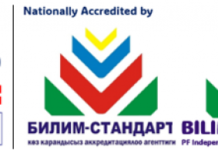The disposable cups market, valued at USD 13.60 bn in 2022, is projected to expand significantly, reaching USD 23.37 bn by 2030, with a compound annual growth rate (CAGR) of 7% anticipated during the forecast period from 2023 to 2030.
(Isstories Editorial):- Austin, Texas Oct 18, 2023 (Issuewire.com) – As per SNS Insider’s research, the disposable cups market’s rapid expansion can be attributed to a combination of environmental consciousness, changing lifestyles, innovative product developments, the growth of e-commerce, and cost-effectiveness.
More on Isstories:
- Storm Pro Solution Extends Support to Nebraskans Affected by Recent Tornad
- Young Musical Virtuosos from 14 Nations Mesmerize at 2024 Grand Metropolitan International Music Competition Finals
- Book Launched “Sales me Safalta ke Gupt Siddhant” in Hindi Language on Sales Management
- Let’s Visit America on This Summer with US VISA Online
- Time to Visit America with the Help of USA Online Visa
The disposable cups market, valued at USD 13.60 billion in 2022, is projected to expand significantly, reaching USD 23.37 billion by 2030, with a compound annual growth rate (CAGR) of 7% anticipated during the forecast period from 2023 to 2030, as per the SNS Insider report.
Get a sample report @ https://www.snsinsider.com/sample-request/3040
Some Major Key Players In The Disposable Cups Market Market
- Benders Paper Cups
- Go-Pak UK Ltd
- DUNI AB
- Huhtamäki Oyj
- Berry Global Group Inc
- ConverPack Inc
- Genpak LLC
- WestRock Company
- Dart Container Corporation
- Pactiv LLC and other players.
Market Report Scope
Disposable cups have become an integral part of modern lifestyle, catering to the fast-paced demands of the contemporary world. These convenient, single-use containers are designed for various purposes, offering a quick and hygienic solution for enjoying beverages on the go. With increasing environmental awareness, there is a growing demand for biodegradable and compostable disposable cups. Manufacturers are investing in eco-friendly materials and production processes to meet this demand. Businesses are opting for customized disposable cups with branding and creative designs, enhancing brand visibility and customer engagement.
KEY MARKET SEGMENTS
By Raw Material
- Paper
- Foam
- Plastic
- Fiber
By Product Type
- Packaging & Drinking Cups
- Lids
- Others
By End Use
- Household
- Institutional
- Commercial
Market Analysis
One of the primary drivers fueling the disposable cups market is the increasing awareness regarding environmental issues. With global initiatives to reduce plastic waste gaining momentum, there has been a paradigm shift towards eco-friendly alternatives. Disposable cups made from biodegradable materials such as PLA (Polylactic Acid) and bagasse have witnessed a surge in demand, driven by environmentally conscious consumers and strict regulations advocating eco-friendly practices. The modern lifestyle, characterized by hectic schedules and on-the-go attitudes, has significantly contributed to the growth of the market. Busy professionals, students, and travelers prefer disposable cups for their convenience. Manufacturers in the market are investing heavily in research and development, leading to innovative product offerings. Double-walled insulated cups, cups with unique designs, and customizable options have become popular choices among consumers. Additionally, advancements in manufacturing technologies have allowed the production of leak-proof and heat-resistant disposable cups, catering to diverse consumer needs.
Enquire About This Report @ https://www.snsinsider.com/enquiry/3040
Impact of Recession
During recessions, consumer spending patterns undergo a significant transformation. With disposable incomes shrinking and financial uncertainty looming large, consumers tend to cut back on non-essential expenditures. Interestingly, amidst economic challenges, consumers are increasingly leaning towards sustainable and eco-friendly products. The disposable cups market, in response, has witnessed a rise in demand for biodegradable and compostable cups. This shift aligns with the global movement towards environmental consciousness and might present opportunities for businesses investing in sustainable cup options.
Impact of Russia-Ukraine War
The Russia-Ukraine war has triggered fluctuations in currency exchange rates and inflation, impacting consumer purchasing power. As disposable cups are considered non-essential items, consumers are becoming more price-sensitive, leading to shifts in demand patterns. Industry players are adopting strategic responses to navigate the uncertainties arising from the conflict in the disposable cups market. Diversification of suppliers, investment in advanced technologies, and strategic collaborations are becoming prevalent strategies. Companies are also focusing on expanding their product portfolios to include eco-friendly options, aligning with global sustainability goals and catering to the growing demand for environmentally responsible choices.
Key Regional Development
In North America, consumers are becoming increasingly conscious of the environmental impact of single-use plastic products. This awareness has led to a surge in demand for eco-friendly disposable cups made from biodegradable materials. Manufacturers in this region are investing in research and development to create innovative, sustainable solutions. European countries have embraced the concept of a circular economy, leading to a significant reduction in plastic waste. The disposable cups market in Europe is witnessing a shift toward reusable and easily recyclable materials. Governments and non-governmental organizations are actively promoting the use of reusable cups, encouraging consumers to opt for eco-friendly alternatives. The Asia-Pacific region, characterized by rapid urbanization and changing lifestyles, presents unique challenges and opportunities for the market. On one hand, the growing urban population demands convenient, on-the-go solutions, boosting the sales of disposable cups.
Key Takeaway from Disposable Cups Market Study
- The paper segment of disposable cups stands as a beacon of sustainability in the market. With the increasing global awareness about environmental conservation, consumers are gravitating towards eco-friendly alternatives. Paper cups, made from biodegradable materials, have witnessed a surge in demand due to their minimal environmental impact.
- The packaging & drinking cups segment caters to a diverse range of consumer needs, from takeaway beverages to food packaging solutions. The Packaging and Drinking Cups Segment offers versatile applications, accommodating various beverages, sauces, soups, and snacks, appealing to both the food service and retail sectors.
Recent Developments Related to Disposable Cups Market
- SSP, a leading operator of food and beverage outlets in travel locations worldwide, and McDonald’s, the global fast-food giant, have recently announced their participation in the Cup Collective recycling scheme. By collaborating with the Cup Collective recycling scheme, both companies are working towards reducing their carbon footprint and minimizing the detrimental effects of plastic pollution on the environment.
- Phade® has unveiled the world’s first-ever PHA-lined paper cups designed specifically for hot beverages. Unlike conventional plastic-lined cups, which can take centuries to decompose and contribute significantly to pollution, PHA-lined cups are designed to break down naturally, leaving behind no harmful residues.
Buy This Exclusive Report @ https://www.snsinsider.com/checkout/3040
Table of Contents
- Introduction
- Research Methodology
- Market Dynamics
- Impact Analysis
- Value Chain Analysis
- Porter’s 5 forces model
- PEST Analysis
- Disposable Cups Market Segmentation, By Raw Material
- Disposable Cups Market Segmentation, By Product Type
- Disposable Cups Market Segmentation, By End Use
- Regional Analysis
- Company Profile
- Competitive Landscape
- USE Cases and Best Practices
- Conclusion
Read our related reports
SNS Insider Pvt Ltd
[email protected]
+1-415-230-0044
Office No.305-B, Arissa Avenue, Fountain Road, Kharadi, Pune, Maharashtra 411014
http://www.snsinsider.com
This article was originally published by IssueWire. Read the original article here.































